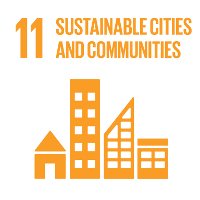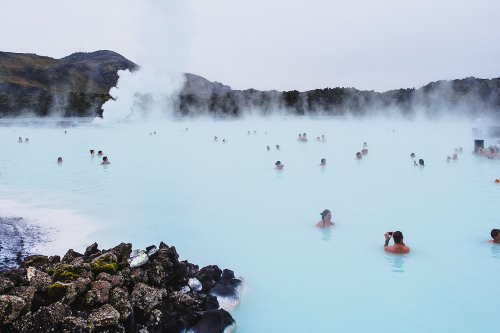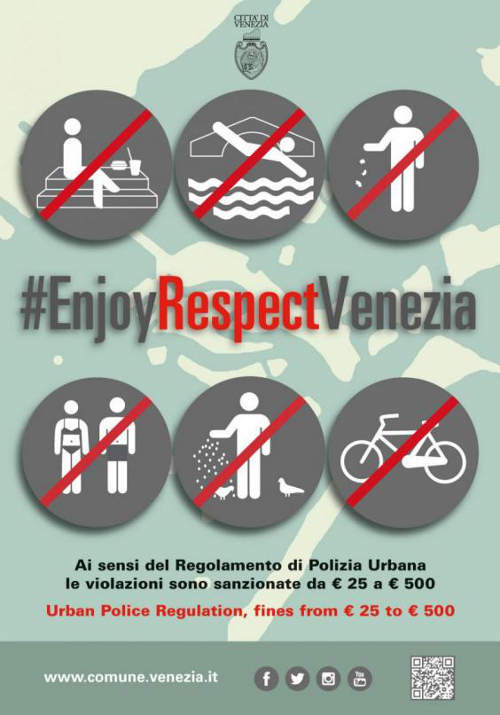Urban migration, sprawl & tourism - is it sustainable?
Cities occupy just 3 percent of the Earth’s land but account for 60-80% energy consumption and 75% carbon emissions. More than half of the world’s population now live in cities. By 2050, it’s expected to be two thirds of all humanity - 6.5 billion people (UNDP). How do we achieve sustainable development and what’s the impact on tourism?
The rapid growth of cities in the developing world and increasing rural-to-urban migration has led to a boom in urban sprawl and mega-cities - those with more than 10 million inhabitants. The first, New York, emerged in 1950. By 1990, there were ten mega-cities; in 2004, 19; in 2014, 28; and in 2016, the UN predicted there would be 5 billion inhabitants in 41 megacities by 2030 (World Urbanization Prospects), with 25 in Asia alone by 2025: Today, there are already more mega cities.
But as governments struggle to accommodate such rising populations, extreme poverty is often concentrated in such urban spaces and infrastructure and services such as waste collection, water, sanitation, roads and transport become inadequate and over-burdened. Projections indicate that urban growth over the next 25 years will be in developing countries, with much of the population living in areas categorised as slums. And as accelerating climate change weather extremes hit, so greater is impacted infrastructure and population.
However, cities can offer more efficient economies of scale for providing goods, services and transportation, and with sound planning and management, can become incubators for innovation and growth, attracting people seeking greater opportunities and a better life: Sustainable development can be achieved if we significantly transform the way we build and manage our urban spaces.
For this reason, Goal 11 of the UN 17 Global Goals of the 2030 Agenda for Sustainable Development is:
SDG #11 “Make cities and human settlements inclusive, safe, resilient and sustainable.”
Progress on Sustainable Development Goal 11 Sustainable Cities & Communities
4.2 billion, 55%: of world population live in cities (2018); by 2030, it’s expected to be 5 billion, or 60%.
95%: of urban expansion in the future will be in the developing world.
90% of people living in urban areas breathed air that did not meet World Health Organizaton air quality guidelines.
More than half were exposed to air pollution levels at least 2.5 times higher than the safety standard set by the WHO.
70%: The global carbon emissions contributed by cities
60%: The global GDP generated and resource used by cities.
Only half the world’s urban population has convenient access to public transport (500-1000m) (2019)
47% of world population live within 400m walking distance of open public spaces
16%: The share of land allocated to streets and open spaces (2019, global average from 610 cities in 95 countries): Streets for about three times as much urban land as open public spaces, such as parks and riverfronts.
24% / 1 million: Urban population living in slums (2018), down for 28% in 2000 but up from 23% in 2014;
In sub-Saharan Africa, it’s 56% – the highest of any region; over 90% In Ethiopia, Malawi and Uganda, three of the world's most rural countries. By 2030, over 2 billion people in the world will be living in slums.4.2 million: premature deaths caused by air pollution (2016)
The Impact of Covid on SDG 11 Sustainable Cities & Communities
Over 90% of Covid cases have been in urban areas.
Slum dwellers and those living in informal settlements already suffer from inadequate housing with limited or no access to basic infrastructure and services, including water, sanitation and waste management.
Limited and overcrowded public transport and health-care facilities have turned slums into epicentres within epicentres.
In poor and densely populated areas overcrowding makes it difficult to follow recommended social distancing and self-isolation rules.
Cities required additional safety measures to mitigate the elevated risk of coronavirus transmission in crowded public transport: systems have faced additional financial pressures due to the loss in previously forecast use.
Many urban dwellers in the developing world work in the informal sector, at high risk of losing livelihoods in lock-downs.
Lock-downs and self-isolation have restricted access to food and healthcare, creating hunger and fatalities.
However, lockdowns also meant a stop of industrial production, traffic and air transport, giving a glimpse of real clean air.
Successful examples of containing Covid19 show the remarkable resilience and adaptability of communities to adjust to new norms.
The cost of poorly planned urbanization is seen in urban sprawl, bad traffic, emissions and air. Covid has forced many governments to revisit urban planning to help prevent the next pandemic.
Challenges of SDG11, Cities & Communities
A city that is not good for its citizens is not good for tourists.
From 2000 to 2015, in all regions of the world, the expansion of urban land outpaced the growth of urban populations: cities are becoming less dense as they grow, with unplanned urban sprawl negatively affecting the sustainability of urban development. (UN Stats)
That said, the total number of people living in slums also continues to grow, outpacing the development of housing, infrastructure and services. These areas have high rates of unsanitary conditions, malnutrition, disease, lack basic health care and are often also in energy poverty. Unplanned urban sprawl is associated with increased per capita CO2 emissions and hazardous pollution, major risks to health.
Making cities safe and sustainable means ensuring access to safe and affordable housing, and upgrading settlements’ conditions, including water and sanitation, energy, infrastructure, investing in public transport, creating green public spaces, contributing to productivity and physical and mental health. Open spaces as places of commerce are critical to the informal economy, which many people depend on for their livelihoods. Better urban planning and management is participatory and inclusive.
Open Spaces
Equitable access to open and public spaces contributes to enhanced productivity and physical and mental health. However, streets take up about three times as much urban land as open public spaces, such as parks and riverfronts.
Open spaces may also be places of commerce are critical to the informal economy, which many people depend on for livelihoods.
But wide disparities in access to public spaces are observed across regions, ranging from 26.8% in Eastern and South-Eastern Asia to 78% in Australia and New Zealand. and within countries, smaller cities record higher levels of access than large cities.
Transportation
Reliable, accessible and affordable public transportation reduces pollution, traffic and emissions and promotes efficient movement, productivity and inclusion. But only half the world’s urban population has convenient access to public transportation, (2019, 610 cities in 95 countries).
Accessible is defined as within 500 metres walking distance of low-capacity transport systems (buses and trams) and within 1,000 metres of high-capacity systems (trains, subways and ferries). Many cities also have a high prevalence of informal transport systems, often deficient in regularity and safety.
There is also a need to enhance access to public transport systems that are well integrated with walking and cycling paths through long-term mobility plans and targeted investments.
Tourism-related challenges
The ‘Cape Town Declaration on Responsible Tourism’ (Fabricius and Goodwin, 2002) defined it as,
“to take responsibility for achieving sustainable tourism, and to create better places for people to live in and for people to visit”
- in priority order, residents quality of life comes before tourists’ quality of visit. A city is nice to visit because it prioritises local needs and residents, that consequently create the nice place to visit.
Destinations’ sustainable development needs to be driven by local need, but tourism can be a vehicle to help achieve this:
“Sustainable tourism has the potential to advance urban infrastructure and universal accessibility, promote regeneration of areas in decay and preserve cultural and natural heritage, assets on which tourism depends. Greater investment in green infrastructure (more efficient transport facilities, reducing air pollution, conservation of heritage sites and open spaces, etc.) should result in smarter and greener cities, from which not only residents, but also tourists, can benefit.”(UN)
Currently, many cities are creating challenges for their communities and tourism.
Overtourism
In 2017, The UN Year of Sustainable Tourism for Development, it was (ir)responsible tourism that really become headline news – for overtourism and its impacts. It had been building up, but the reality of only focusing on pushing for the economic growth and jobs that tourism brings comes at the cost of a unbalanced triple bottom line: tipping the scales on the environment and social impacts; straining services, infrastructure and local people’s tolerance.
In popular cities served by no-frills flights, cruise ships and readily available accommodation 'sharing', benefits from tourism are hardly for the common good, where as its costs are hit residents hard, and locals are increasingly raise their voices. From Amsterdam to Barcelona, Berlin, Copenhagen, Dubrovnik, Florence, Genoa, London, New York City, Palma de Mallorca, Paris, Prague, Queenstown, Rekjavik, Rome, Venice to Valencia, city residents tell tourists, “go home”.
Whilst there are also issues around over-tourism in US National Parks and cultural and historical sites such as Kyoto and Hiroshima in Japan, many recognised over-tourism destinations are cities: Of the 1.4 billion international tourists in 2018, more than 36%, or half a billion, visited one of the planet's 300 most popular cities (WTTC); others expected to surge the next decade include megacities Delhi, Cairo, Manila, Bangkok and Moscow.
Europe received 713 million visitors in 2018, approximately 50% of the world’s tourism (1.4 billion), with 9 consecutive years growth.
No-frills flying opened up spontaneous travel to many, with its low-cost based on removing non-essential features for minimum comfort, often flying to remote airports with lower access charges, with governments even luring airlines’ routes with subsidies for potential tourism export revenues.
This has enabled people to travel more than ever, making more destinations more accessible than ever including many culturally beautiful cities, now faced with stag and hen parties seeking weekends abroad with cheap beer, and the ensuing social behaviour, not to mention the greater environmental impact of more aviation.
Cruise is a part of the travel sector which has seen enormous growth for years, its popularity in visiting multiple destinations, convenience, service levels, facilities, entertainments and aspirational escape, seen as great value for money, and welcomed by destinations for the potential economic impact from tourist spend and job creation.
But consumer demand growth means a drive for more and bigger ships, and destination ports, to accommodate the annual 25 million passenger business, with relatively little consideration of environmental or social impacts for marine conservation, air quality and residents’ lives, as they spew more pollution into air and water and people onto small streets of temporary destinations.
The largest cruise ship accommodates over 6,600 passengers. The largest at least 13 all carry over 5000 passengers (Wikipedia) while 314 cruise ships operating in total worldwide have a a total capacity of 537,000.
For Genoa, cruise generates annual tourism revenue of 5.3 billion euros, but that comes with 15 million tourists (2016). Even in the winter January and February, they receive more than a million monthly visitors. Its peak cruise arrivals month is October; in October 2014, 6 cruise ships carrying 14 000 passengers together arrived in a single day. The impact of this on a destination and its resident cannot be under-estimated – but cruise ship arrivals have provoked protests here dating back to at least the "Costa Concordia" shipwreck - in January 2012 - off the region's coast.
Accommodation “sharing” economy sites have also played a part in overtourism in cities, making cheaper stays more accessible. Originally touted as offering great responsible tourism benefits, supporting local people with supplementary income and businesses in their localities, the demand has created perhaps unintentional costs. Locals have moved out to prioritise holiday rentals, creating a housing stock shortages, local property price inflation and tourist tax avoidance, more tourists, less income for support services, less residents, culture and ‘soul’ of places diluted and more pressures on services and residents who remain.
What is being done to curb overtourism?
In 2017, demonstrations and violence brought tourism to the headlines and put responsible tourism on the political agenda. Whilst governments have always been known in the tourism sector to be key stakeholders, residents and consumers are waking up to its importance, and demanding the need for local authorities to better plan and manage impacts of tourism, particularly under the pressures and stresses of cities. Many are also reviewing their policies with regards to foreign ownership of properties on a national level.
Here’s some examples of cities’ and countries’ new tactics to manage tourism for the benefit of their communities:
Amsterdam concerned over its party attraction, ‘Disneyfication’ and tourist centre monoculture of noise, trash and nuisance, tries to reverse the trends that push out locals to provide "balance in the city" and ensure that “the city stays livable for all residents" for its population of 800,000 which receives 19 million visitors and expects 42 million by 2030. In May 2018, it stated it is ‘a city to live and work in - and only a tourist destination in the second place', stopping advertising, switching from “destination promotion" to "destination management".
It has banned short-term home rentals in the busiest areas, elsewhere only allows it with a license, has halved the number of days permitted for home rental to 30, and cracked down on "fun rides" like beer bikes and boozy boat trips with tour boats dis/embarking outside the centre; it’s also banned tours of its infamous red light district, requires tour guides to have a permit, plus no longer allows within the central 'Ring' area touring cars that transport tourists into and out of the city.
'Demarketing' will reduce advertising as a city, and concentrate on spreading visitors, congresses and promoting cultural tourism such as the Anne Frank House and Van Gogh and Rembrandt art, plus introduce advertising taxes and ban advertising street boards that play videos in order to create calmer streets. As the plans will cost money, the tourist tax rose from 4%-6% to 7% plus €3 per night - raising €105 million a year by 2022 (anticipated before Covid).
A €8-per-passenger tax on all ocean and river cruise ships has already seen some cruise lines cancel stops there. It’s also previously diverted cruise ships from docking in the centre, cancelled plans for a new larger port for cruise ships and banned any more retail premises aimed at tourists: souvenir shops, waffle houses and ticket outlets, and considering limiting branches of large retail chains.
It is however continuing to welcome tourists with open arms, but managing them more cleverly using the latest technology and tools: marketing outlying districts, such as ‘rebranding’ Zandvoort, as ‘Amsterdam Beach’, and analysing Big Data from the city visit card to encourage tourists to change how, where, and when they visit, for example the museum and boat trips, with an AI chat bot in development, plus live streaming the entrances to attractions with mobile notifications of peak times. As ‘I Amsterdam' previously said, “You cannot close a city.” (Conde Nast Traveler). For destination management (rather than destination marketing), Amsterdam have turned to Doughnut Economics to consider impacts of alternative management choices within social and planetary limits.
Copenhagen with its 10 million visitors a year (vs 600,000 residents) put a stop to new bars and restaurants in the city, but developed special cycling paths for tourists and introducing 'silent areas' where talking loudly is forbidden while walking down the streets.
France receives the most tourists in the world (90 million), but is one country where tourism seems quite planned. The Eiffel Tower’s 7 million visitors per year are limited to half an hour, street vending is strictly regulated, the surrounding area cared for by specialists, with heavy fines for any littering. However queues, particularly for Paris attractions in the summer, can be extensive so visitors are advised to book 3 months in advance, and there are concerns of saturation.
Dubrovnik’s popularity, part due to the 'Game of Thrones effect' and a cruise port receiving 539 ships a year (2017) has been limited in its historic centre every day to a maximum 8,000 visitors, with 5000 from a maximum 2 cruise ships per day, UNESCO having advised the limit within the Old Town at any one time to prevent damage to the city’s oldest buildings. The walled city’s gates are fitted with surveillance cameras to monitor the daily arrivals; once past 6000, crowds are slowed down; beyond 8,000, people are denied access. A $45 Dubrovnik City Card, or a day advance registration, offers “priority access to the city”.
Iceland did an incredible marketing job since its banking collapse in 2008 and subsequent financial crisis. Understanding its assets lay in its natural capital, it saw tourism as a saving grace and geared itself to become a bargain destination as a major transatlantic US-Europe gateway and stopover. However, the (Game-of-Thrones-effect) boom has become a backlash as demand now outstrips supply, hospitality infrastructure strains under the pressure (tourists known to have knocked on residents doors for accommodation), prices inflate, and locals are pushed out – visitors jumping from 500,000 in 2010 to over 2 million in 2019, mostly in Rejkavik, dwarfing its 357,000 population. US visitors alone outnumber Icelandic residents. With 79% locals thinking there’s too much pressure on the country’s nature in 2017 yet only 18% thinking there should be a cap on tourism, the government looked at taxation to manage and re-premium Iceland’s tourism (Skift, 2017).
Barcelona charges a tax on all overnight accommodation and has even created a badge to show projects funded by it. Its 12 million visitors (2019) may deliver millions of euros for the city annually, but it’s enforced a ban on opening new hotels in the city centre, as well as limiting cruise ships that deliver 2.5 million visitors a year: more people than its local 1.6 million population, many of whom only visit for a day, due to the cost such as air and plastic pollution being more than they contribute in benefit (€ per passenger).
Venice’s population of 55,000 is swamped by 60,000 visitors each day - that’s a coach load every minute on average! - only half of whom stay overnight. Venice struggles with all overtourism’s vehicles to market: home-sharing, no frills and cruise.
Venice has battled for years to keep the largest cruise ships out of its lagoon due to water displacement damage, engine pollution and aesthetic dominance over the city. A ban (2014) was overturned by authorities (2015), in spite of UNESCO’s threat to put the city on its list of endangered heritage sites if none of the measures required to protect the lagoon and its delicate ecosystem were implemented (Telegraph). A voluntary ban saw numbers reduce, however in 2018, 502 cruise ships still spewed 1.56 million visitors onto Venice's already-jammed historical centre.
In 2019, a collision between 2 boats which injured 5 passengers, and a near-miss of a cruise liner ploughing towards a canal-side restaurant, saw the ban reinstated - except the weight and force of the ships is already an ecological disaster on the fragile lagoon and city's wooden foundations. Large ships now have to dock at the city's industrial port until a permanent solution is found, with smaller ships, of 55,000 tonnes or less, allowed to continue along the current canal route.
Harboured cruise ships are now limited to two a day (UHPA) and crowd control barriers and a “person counting system” introduced at the historic city's key sites to regulate the flow of visitors, a daily ticketing system which though “would effectively turn the entire city into a large, for-profit museum” (Conde Nast Traveler).
Tourists will also have to pay a €3-€10 ‘contributo disbarco’ – a disembarkation contribution - day trip fee, to “allow us to manage the city better and to keep it clean” and “allow Venetians to live with more decorum” - costs so far only paid by Venetians for its tourism-pull historic cultural heritage. If makes Venice the first city in the world with an admission fee for day visitors; overnight visitors already pay €1 - €5 per person hotel stay tax, with the likelihood of booking-required in future.
The Mayor of Florence called for a law to extend day fees to all of Italy and to address the use of private residences as tourist lodgings, “threatening the residential nature of the historic centers of all the Italian art cities” (Skift).
Venice has also installed turnstiles to limit the flow of tourists in certain areas of the city and reinforced rules and regulations that have been in place for years but neglected: no swimming in the canals, no sitting on the ground of iconic historical monument sites like St. Mark’s Square, no littering, wearing swimwear, giving or scattering food, cycling in the city centre, or camping and it’s forbidden to “hinder circulation of traffic on bridges and alleys”, with hefty fines of $29-$580 (€25 to €500) for those found breaking the rules.
Demarketing tourism destinations has become a 'thing'.
But it’s not just a stick approach, Venice are also telling offering a carrot and promoting responsible behaviour, telling tourists to live by the golden rule with the #EnjoyRespectVenezia campaign i.e. Treat the city like you would want visitors to treat yours. Signs and posters are display in 10 languages including English, Chinese, Arabic and Korean, throughout the main tourist areas. (Skift)
The campaign plays on the International Year of Sustainable Tourism for Development #IY2017 slogan, TravelEnjoyRespect. Going on what’s gone before, and residents’ responses, it’s certainly not appeared very sustainable in the past. But maybe it can rescue itself promoting typically responsible tourism behaviour: discover the city’s hidden treasures, explore nearby islands, visit a food market and sample local produce. It remains to be seen if tourists will do as suggested!
Readjusting tourism: What can be done?
Of course it’s not just cities suffering from over-tourism, it’s the same issues for Montenegro and Scotland’s Inner Hebrides and Isle of Skye - and many other places.
But in a world with mega cities’ and slums’ citizens’ needs not being met, and the over-tourism of European cultural heritage site cities’ citizens’ needs not met, there seems such misalignment: The previous mass tourism model is ‘broken’ – it does not deliver benefits for guests and hosts, but yet places exist that need and want consumer support for sustainable development. How do we balance this?
The Power of the Consumer
Destinations can of course apply supply-side ‘stick’ strategies to limit capacity and behaviours, or ‘carrots’ to encourage tourists to spread the impact. It is tourist demand which enables the supply, tourist choice that creates an impact. Tourists do have the choice – to go to another place, at another time, to travel in a different way. At Earth Changers we would encourage quality over quantity and tourism which supports our values and manifesto. We expect tourism patterns to change due to Covid and people’s valuing spatial distance.
Tourism to rural areas not only helps spread the benefits of tourism in terms of expenditure by tourists, but helps create employment, and other local support services as a result, which can help slow down rural-urban migration and the growth of mega cities and slums. This can help create more resilient and sustainable communities, both in rural areas and urban cities.
As a former teacher and Peace Corps volunteer, Karen Lewis had witnessed the devastating effects migration from rural areas to cities for education, training and employment had on local villages, as both a brain and brawn drain. So she set up Lapa Rios in Costa Rica from the outset as a conservation tourism organisation to create jobs and support education as a long-term empowerment tool to sustain the isolated, wilderness region.
Links with the other Sustainable Development Goals
Inclusive, safe, resilient and sustainable cities and communities are key to tourism for sustainable development:
Goal 1 - End Poverty: Cities and communities cannot be sustainable where poverty exists.
Goal 2 - Zero hunger: Cities and communities cannot be sustainable where hunger exists.
Goal 3 - Health & Well-Being: Slums have high rates of unsanitary conditions, disease and lack basic health care.
Goal 4 - Quality education: Cities and communities cannot be sustainable where inaccessible education makes migration likely.
Goal 5 Gender equality - communities without female empowerment will struggle to be sustainable wit continued discrimination.
Goal 6 - Cities and communities require access to affordable, safe and sustainable water and sanitation to be sustainable.
Goal 7 - Cities and communities require access to affordable, reliable, sustainable and modern energy to be sustainable.
Goal 8 - Without sustainable economic growth & productive employment cities and communities cannot be sustainable.
Goal 9 - Without resilient infrastructure, sustainable industrialization and innovation cities and communities cannot sustainably develop.
Goal 10 - Only with more global equality will cities and human settlements be more inclusive, safe, resilient and sustainable.
Goal 12 - Sustainable consumption and production is needed where urban sprawl is leading to high demands for goods and ser.
Goal 13 - Climate change – adverse weather patterns can destroy and damage cities and communities.
Goal 14 - Marine environment conservation is required to support even inland communities’ consumption and production.
Goal 15 - Life on Land - the earth's land natural resources are required for communities’ life and sustainability
Goal 16 - Without Peace and Justice, cities and communities would destroy each other - obviously unsustainable!
Goal 17 - Partnerships - no man, community nor city is an island - we all form an ecosystem of support required for longevity.
< Reduced Inequalities SDG10: Previous




















